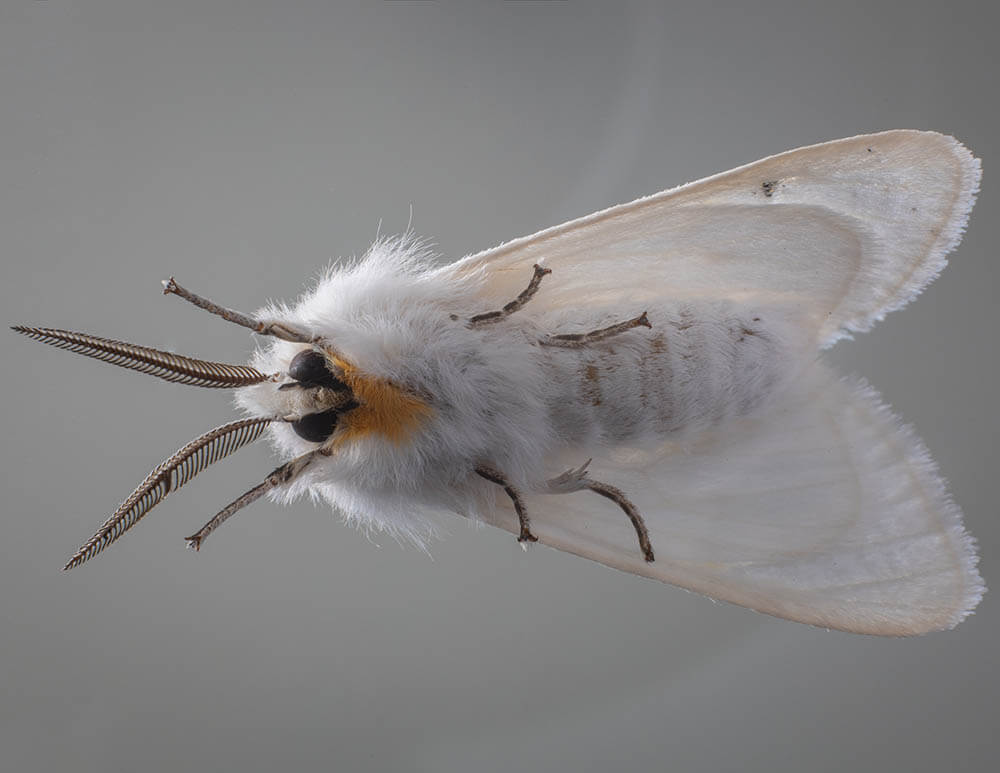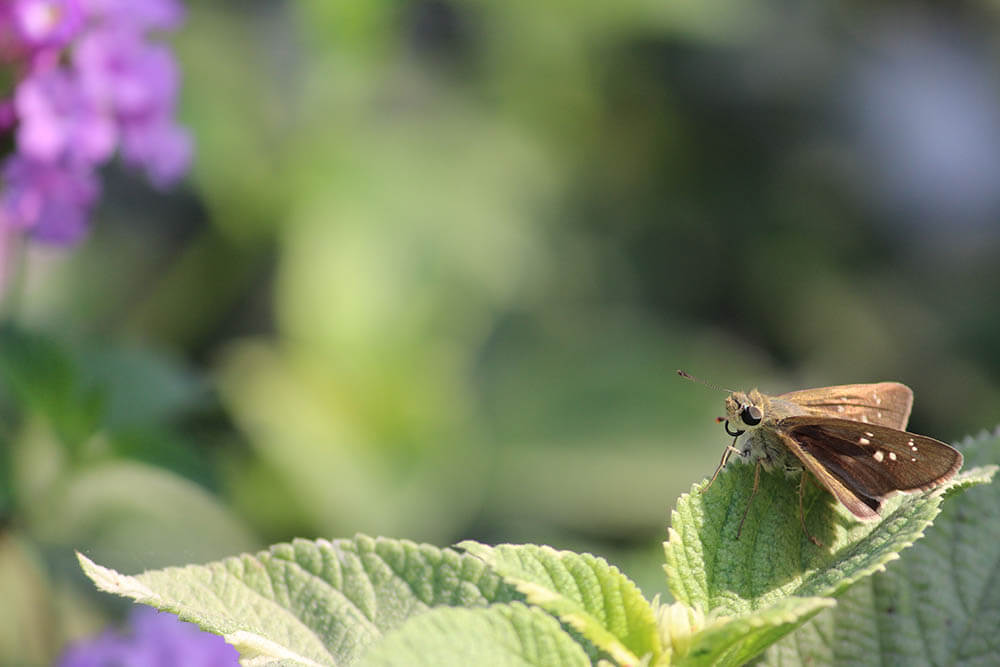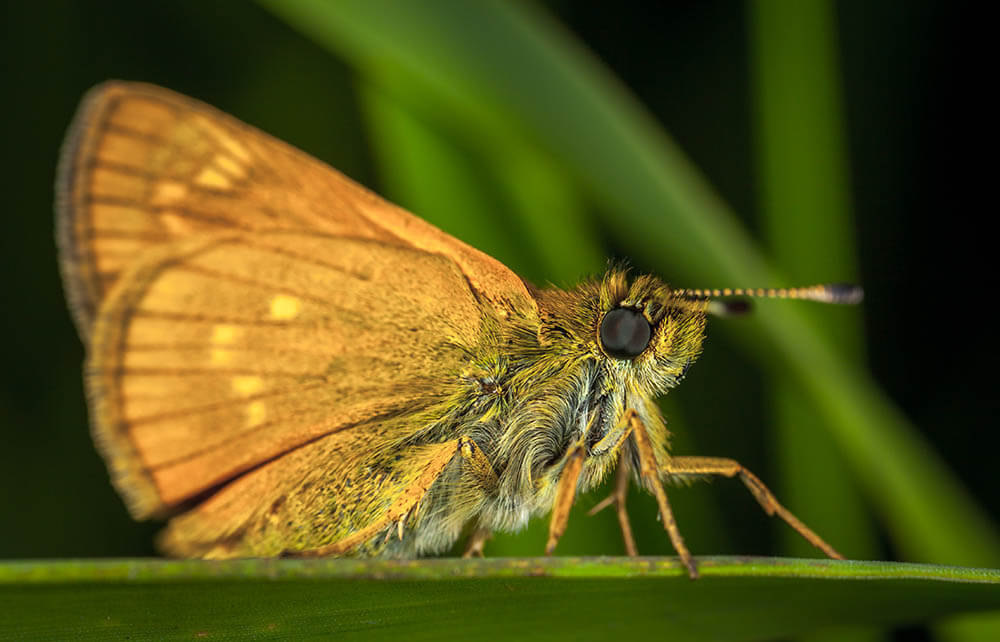Dogs are playful animals born with the hunter instinct, and it’s for this reason they love chasing down and eating small, fast-moving creatures. Such creatures include rodents, birds, and even insects such as the humble moth.
Yes, as gross as it sounds, dogs eat insects, and they get a particular kick out of catching and munching on moths!
The question is: should dogs eat moths? Do moths provide dogs with nutritional benefits? Or are these bugs more likely to give poor Fido a tummy ache?
Keep reading to find out!

Can Eating Moths Harm Dogs?
Thankfully, the answer to this question is no. Moths aren’t the carriers of any parasites or diseases that can harm your dog. These insects aren’t toxic to canines, either. So whether your dog eats one moth or several moths, you can expect them to stay issue-free.
In fact, moths are fairly healthy for dogs as they’re a source of protein. Protein is a nutrient that provides your pooch with the amino acids necessary for the building and repair of various tissues, including the skin, hair, nails, muscles, ligaments, tendons, and cartilages. Protein also keeps the immune system strong and is involved in the production of hormones that make many biological processes possible.
So when a dog eats a moth, they’re essentially having a tasty, nutritious snack! Not to mention the physical effort it takes to pursue a fleeing moth gives your pooch the exercise they need to stay healthy!
The only way the consumption of moths can lead to problems is if your dog eats a significant amount of them. This is because your pet may have trouble digesting such great numbers of moth feathers, which can lead to issues such as diarrhea, vomiting, and excessive drooling. While this problem should go away on its own, contacting a vet can help ease any anxieties you may have about your dog’s health.
Should I Get Rid of Moths?
While moths won’t harm your dog, they can be a nuisance if they multiply. After all, these tiny critters enjoy snacking on natural fabrics, which can leave clothes, drapes, carpets, bedding, and upholstery ridden with holes.
Then you have pantry moths that are attracted to dry animal food such as dog food. These insects lay their eggs in the food. Once the eggs hatch, the larvae then feed on the food.
It’s therefore in your best interests to get rid of the moths in your home, especially before they grow in number and become a real challenge to exterminate.

How to Get Rid of Moths
You can easily eliminate the moths in your home by using a combination of the following methods:
Cleanliness
Because moths are attracted to dirt and dust, observing proper hygiene is key to keeping them away. Use dusting cloths, a vacuum, and eco-friendly cleaners to keep your carpets, floors, and moldings clean at all times.
The storage area where you keep your dog’s food should also be spotless so no pantry moths are attracted to any crumbs. Don’t leave any bags of food open, either.
Cedar-scented spray
Spray this directly on the insects or the surfaces they frequent. This kills not just moths but silverfish, carpet beetles, and other crawling and flying insects. As a bonus, this smells great and won’t leave a stain.
Alternatively, you can dilute cedar oil in water and use this as a spray.
However, make sure not to use this spray on food, feeding areas, clothing, bedding, or any items your pets use frequently, as it can harm puppies less than 12 weeks old and cats. It can even kill aquatic animals.
Herbs
Combine powdered, crushed, and dried herbs (specifically thyme, rosemary, cloves, bay leaves, and lavender), then put them in bags that you can hang wherever you keep food or clothes. Moths hate the smell of these herbs.
Make sure your pets can’t reach these bags, however. Some of these herbs, such as lavender and cloves, are toxic to dogs and cats when eaten.
Sticky trap
Cover a sticky trap with moth pheromones to attract moths to it. They’ll get stuck on its surface and die.
Vinegar
Use a solution of vinegar and water to wash and scrub areas where you discovered moth eggs and/or larvae. Vinegar is safe for dogs, so this method is unlikely to hurt them.
Freezing
Belongings such as clothes that show signs they’ve been visited by moths should be placed in the freezer for 24 hours or more. Extremely low temperatures are deadly to tiny larvae that may have made these items their home.
Washing
To get rid of moth eggs and/or larvae attached to clothes, wash said clothes using hot water, then subject them to high heat using a dryer. If you can’t wash or use a dryer on those clothes, put them in the freezer for a minimum of 24 hours.
Training
Train your dog to avoid eating moths. Every time you see your pooch showing interest in a moth, use a verbal command to stop them, then use a delicious treat to reward them for obeying you. This way, they’ll learn to stop munching on moths in anticipation of a bigger, tastier snack.

FAQs About Moths as Food for Dogs
It’s time to answer more questions about moths as canine snacks!
My dog ate a moth. What should I do?
Relax. It’s extremely unlikely eating one or even several moths will harm your dog. As mentioned above, moths don’t carry any parasites or diseases that can make canines ill. They’re not poisonous, either.
Your dog would have to eat a whole bunch of moths to experience issues possibly caused by difficulty digesting all those feathers. But even then, you can expect any resultant diarrhea, vomiting, or drooling to resolve on its own quickly.
My dog ate a moth and got sick! What should I do?
If your dog experiences vomiting, diarrhea, or excess drooling after swallowing one or a few moths, they may have eaten something in addition to the moth(s), and it’s that something that has made them ill. Remember that there are many possible illness-inducing things in your dog’s environment, such as pesticides in the yard, bad food that’s become home to germs, food that’s toxic to dogs, and disease-carrying insects.
If you observe the aforementioned symptoms in your dog, contact a vet as soon as possible so they can give you instructions regarding what to do next. In the case of severe symptoms, your best option is to rush your pooch to an animal clinic or hospital. The ingestion of something inappropriate can result in dire consequences requiring quick, emergency treatment.
If you can’t reach any pet clinics or hospitals, those in North America can call the Pet Poison Helpline at (855) 764-7661 or Animal Poison Control at (888) 426-4435.
To prevent your dog from getting sick, make sure you thoroughly and regularly clean your property and avoid using chemicals that can hurt animals. Keep food sealed from contaminants and clean the area where you store your food. Food and items that can poison your dog should be kept out of their sight and reach, as well.
What bugs are safe for dogs to eat?
In addition to moths, dogs can safely eat the following bugs:
- Grasshoppers
- June bugs
- Stink bugs
- Flies
- Termites
Don’t panic if your dog ingests any of these insects! It’s extremely likely they won’t suffer any issues.
What bugs are unsafe for dogs to eat?
Prevent your dog from eating the following critters:
- Cockroaches
- Mosquitoes
- Ticks
- Fleas
- Cicadas
- Ants
- Bed bugs
- Spiders
- Butterflies
- Ladybugs
- Fireflies
- Earthworms
Eating these creatures can make your dog ill. Contact a vet for advice if your dog eats any of them and starts exhibiting signs of trouble.

To Conclude…
So, can dogs eat moths? The answer is yes; these tiny insects won’t cause your dog any trouble when eaten. However, as moths can be a nuisance around the house, it’s best that you eliminate them before they proliferate.
Keep your dog away from other bugs, such as cockroaches, butterflies, and spiders. Should your dog experience any problems after eating such creatures, contact a vet for help!
